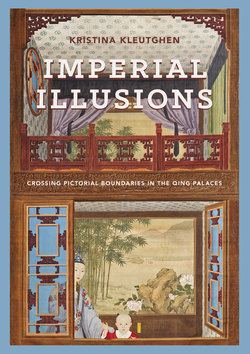Читать книгу Imperial Illusions - Kristina Kleutghen - Страница 69
На сайте Литреса книга снята с продажи.
ОглавлениеTWO
The Study of Vision
ALTHOUGH NONE OF THE SCENIC ILLUSION PAINTINGS THAT YONGZHENG commissioned are known to survive, essential evidence for illusionistic painting during his reign can be found in a woodblock-printed treatise: The Study of Vision (Shixue, 1735). In this work, the high-ranking court official Nian Xiyao (1671–1738) expanded significantly upon his initial investigation into the subject, The Essence of the Study of Vision (Shixue jingyun, 1729), which had been published only two years after the first commission for scenic illusion was recorded in the palace workshop archives. Nian was acknowledged in both eighteenth-century China and Europe as an expert in Western learning, and his personal interest in both Western mathematics and Western art met in the study of linear perspective, the geometric foundation for the complex psychological experience of misperceiving a two-dimensional painting as three-dimensional space. The product of these interests was The Study of Vision, a 149-page treatise that predominantly employs diagrams to teach the European pictorial techniques of linear perspective, foreshortening, horizontal spatial recession, and shadows as the technical substructure of Western illusionistic paintings. Woodblock-printed painting manuals played an important role in late imperial Chinese art and culture, but The Study of Vision is unique in its highly technical illustrations, which demonstrate how to create two-dimensional images that appear to mimic how the eye sees the three-dimensional world. Although one of the responsibilities of the European artists at the Qing court was teaching these techniques to
